Hermann Goertz, Nazi Spy In Ireland
Hermann Goertz was born in the port city of Lubeck in northern Germany in 1890. He was from a family who traditionally became lawyers, and he was aiming to follow suit until the First World War interrupted his studies. Details are scant on his war service, but we know that he fought on the Eastern Front against Russia, was wounded around Christmas 1914, and received the Iron Cross for valour. At some point during the war he joined the German Air Force, though it’s unsure whether he did it before or after it changed its name from Fliegertruppen des deutschen Kaiserreiches (”Imperial German Flying Corps”) to the simpler Luftstreitkräfte. (Of course, nowadays it is better known as the predecessor of the Luftwaffe.) He trained as a pilot and served as a recon officer, but he also showed a talent for “interrogation” (read: torture) of captured enemies, and he reached the rank of Captain as an interrogations officer by the end of the war. He served alongside Hermann Goering, future founder of the Gestapo and head of the Luftwaffe. The most notable moment in Goertz’s first military career seems to have come after the Armistice – he was reputed to be responsible for persuading Goering not to burn the planes in his squadron before the enemy forces could impound them. [1]
When the war ended, Goertz returned to civilian life. He married Ellen Aschenborn, the daughter of a retired German Admiral who had commanded Germany’s motor boat forces during the war. Goertz completed his studies in law, earning a doctorate in international law. This led him to travel abroad frequently. In 1927 he visited Ireland, and was enchanted by the beauty of the Irish countryside. This visit may have been prompted by an academic interest in the treaties and legal relationships forming between Ireland and Britain. At conferences in America, Goertz was known to discuss these matters with members of Clan na Gael, the American society that had acted as a major fundraiser to the IRA during the struggle for independence. They, of course, were strongly on the anti-Treaty side during the Irish Civil War, [2] and Goertz doubtless had some sympathy. Like many Germans of the time, he also regarded the treaty that had ended his country’s war as a betrayal.
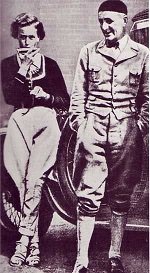
In time those feelings festered like poison in the country’s heart, until it gave birth to the historical horror of the Nazi movement. In 1935 the Nazis reintroduced conscription, and Captain Goertz took up his old rank again. In August 1935 he arrived in Suffolk, England. With him was Marianne Emig, a 19 year old woman who was posing as his niece and secretary. (An interesting cover, as anyone who thought Goertz was hiding anything would probably assume he was actually on a holiday with his mistress.) They spent a few weeks in Suffolk before moving on to Broadstairs, where there was a large air force base. There, they became a notable local curiosity, due to their possession of a motorcycle (a rarity at the time) and the unusual protective gear they wore on it. Marianne used the motorbike to grab the attention of a local airman, named Kenneth Lewis. She invited him along to tea, where she and Goertz played the part of amateur aviation enthusiasts to the hilt. Marianne specifically asked that he get her pictures of aircraft and aerial photographs as gifts. He was a bit uncertain of this, but Marianne assured him:
You must remember, in the next war, England and Germany will be on the same side. [3]
Overall the operation seemed to be a success, but Goertz was foolish enough to blow his cover as they departed Broadstairs. He left a note for his landlady saying he would be back to pick up his things from the house, and asking her to take care of his “bicycle combinations”. By this he meant the overalls he wore on the bicycle, but she assumed he meant his actual motorbike. When she found it gone, she worried that it had been stolen and called the police. They found no evidence of a burglary, but they did find some of Goertz’s sketches of the airforce base in the pocket of the overalls. When he returned to Britain a few weeks later, the police were waiting at the airport and he was arrested.
Goertz’s arrest was front page news, as the revelation that Germany was spying on Britain would have been a major international incident. The German government, of course, disavowed all knowledge of him. Goertz pleaded innocence at his trial, claiming to have been in England gathering material for a book about the British Air Force. Evidence did emerge that he had been acting alone, though whether real or planted evidence is impossible to tell. The court, possibly under diplomatic pressure, decided that whether he had been acting alone or not was irrelevant. He was guilty of espionage regardless, and so he was sentenced to four years in prison.
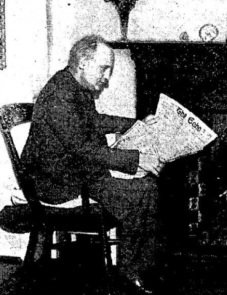
Goertz was released in February 1939, before hostilities broke out between Germany and Britain. On his return to Germany he was promoted to Major, increasing the likelihood that he had actually been acting under orders and was being rewarded for keeping the faith. Furthermore, while in prison he had made what seemed to be valuable contact with the remnants of the IRA. The organisation had been outlawed in 1936 by Eamonn de Valera, but a strong anti-Treaty and anti-British feeling still ran deep in a lot of Irish people. One of the leaders of this remnant, Stephen Hayes, had sent a plan (known as Plan Kathleen) to the Nazi leadership. It proposed landing German troops near Derry, and having them (along with IRA troops in Leitrim) swoop east across Ulster and conquering it. Somehow this would then trigger a coup in Dublin and allow them to install a new government loyal to the Axis. It was a profoundly stupid plan on multiple counts, but the Nazis decided that the willingness to plan for this at least showed potential. And at worst it would be a distraction from their own plan (Operation Green) to invade Ireland in the secondary phase of their planned invasion of Britain. [4] The success of the IRA in attacking the Magazine Fort in Phoenix Park the previous Christmas also gave the Nazis hope that they could be used as an effective strike force on military targets. [5] As such, they authorised Goertz to travel to Ireland in May 1940 in what they called “Operation Mainau”.
Goertz landed in a field outside the village of Ballivor, on the western edge of County Meath. He later claimed that this was a mistake and that he had planned to land in Tyrone, though this was almost certainly a lie. [6] The remote location let him land undetected, though he was unable to find the second parachute that came down with him to bring his radio set. This was not ideal, especially as Goertz was wearing a full Luftwaffe dress uniform. (This may seem odd, but was actually standard practice for spies parachuting in. If he had been caught landing in civilian clothing, it would have been a clear violation of international conventions, and he could legally have been shot out of hand.) The plan was obviously for him to radio his contact and have a change of clothes brought to him, but that was clearly no longer an option. So Hermann instead decided to brass it out, and (still dressed in full Luftwaffe uniform) walked eighty miles south to the nearest isolated address he could remember. Amazingly, it paid off – along the route he even called into a Garda station for direction, and the policeman on duty gave them to him. Doubtless he could not believe that anyone could be so bold.
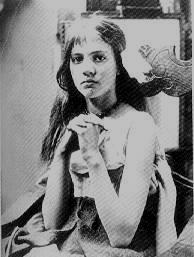
Goertz’s destination was the home of Iseult Stuart, daughter of the Irish rebel Maud Gonne. [7] Of course, nobody had told Iseult about this, and the first she knew was when she answered a knock on the door to find a tall scar-faced man in dark clothes (he had disguised the uniform) scowling at her. Not knowing who he was but recognizing trouble, Iseult got him in off the street and called his IRA contact to pick him up. Goertz’s contact was Seamus O’Donovan, a senior IRA figure who had orchestrated a bombing campaign in England the year before. O’Donovan had met Goertz in Berlin earlier, as he was the one who had delivered Plan Kathleen to the Germans. As he drove Goertz away, O’Donovan warned him against trusting Iseult as she was not committed enough to the cause for him. It was an omen of things to come.
On the 21st of May Goertz met with Stephen Hayes in Dublin. He had brought a great deal of American currency with him (between $20,000 and $175,000, by various accounts) and most of this he handed over. This financial contribution won him some goodwill, though it did not go both ways. Goertz was unimpressed with the Irish operation, which he regarded as riven by infighting and hopelessly insecure. This was underscored two days later on the 23rd of May when the house they met in was raided by the gardai. They found Goertz’s uniform and insignia, along with details of Plan Kathleen. Here was indisputable proof that the IRA were in collusion with Nazi Germany. There were three direct consequences of the raid. The first was that it immediately strengthened ties between British and Irish intelligence. Within days the British spy Dudley Clarke travelled to Dublin to begin discussions on Plan W – a secret treaty that would allow British troops into Ireland to defend it in the case of a Nazi invasion. [8] The second was that it brought an end to parachute missions into Ireland by the Nazis. Their report on the 25th of May reads:
[S]ome items of equipment and the money which he took with him were apparently seized in the house of an Irish agent, through the latter’s stupidity. Unfortunately this Irishman also had in his possession plans for a rebellion which had no connection with ‘Operation Mainau’. There is no information as to “Gilk’s” whereabouts…In consequence of the failure of ‘Operation Mainau’ proposals for the parachuting of further agents are for the future to be disregarded
“Gilk”, of course, is Goertz. They may also have been prompted to end the practice by an angry communication they received from the German ambassador, Eduard Hempel, who had no idea Goertz was in the country and who was left to pick up the pieces with the Irish government. The third consequence of the raid was that Goertz lost all trust in the IRA, and refused to have anything more to do with them for the rest of his time on the loose in Ireland. In fact, so determined was he to avoid them that he even abandoned one safehouse when he found out it had been previously used by the IRA. His main protectors seem to have been a succession of elderly ladies, still loyal to republican ideals but disassociated from the “official” movement. The first of these was a friend of Iseult Stuart, who met him at her house when he sought sanctuary there. Iseult had already been arrested, on the strength of papers captured in the raid, but she was eventually released without charge. Based on his experiences, Goertz seems to have concluded that the Irish were constitutionally incapable of secrecy and so from then on he kept his plans to himself as much as possible. His other big problem with the Irish rebels was that he felt they lacked ambition, and refused to think in big terms.
A hired taxi, four men in it with seven rounds in a non-functioning machine gun, that is the way they think that they can fight England. That is very sad. But outside a national movement is growing everywhere. It could so easy become a flame. But they are as timid as the masses in their imagination.
Goertz himself doesn’t seem to have been that effective as a spy either, however. In the first few months he was in Ireland he did meet with several Irish sympathisers secretly (reportedly including the Irish general Hugo MacNeill, who was the commander of Ireland’s Second Division). He also made contact with Hempel, who was delighted to discover that this potential diplomatic embarrassment was actually eager to leave the country and return to Germany. Hempel tried to arrange a boat to pick him up on the coast and take him to Nazi France, but the plan was foiled by bad weather. One other problem was that the Irish intelligence service G2 had managed to intercept most of his messages back to Germany, and thanks to the efforts of legendary Irish codebreaker Dr Richard Hayes [9] they were able to read them. They even sent back fake replies to convince him that his messages had gone through, and one (somewhat far-fetched) story has it that his promotion to Major was a hoax played by a bored G2 agent.
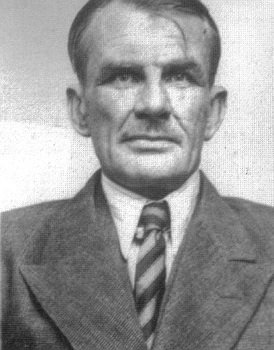
Eventually in November 1941 Goertz was captured. His paranoia proved well-founded – the police were led to his hiding place in Blackheath Park in Clontarf when they trailed a known IRA member named Pearse Kelly to the same building. Goertz was interned without trial, something which infuriated him as his knowledge of international law convinced him this was illegal. He even went on hunger strike in protest, but he stopped after three weeks when his fellow prisoners convinced him that nothing would please the Government more than if he died and stopped being an embarrassment. Which he definitely was – a week after he had been arrested America had entered the war, and De Valera was under a lot of pressure from his old homeland to abandon Ireland’s neutrality and join the Allies. The fact that an actual Nazi spy had been caught in Ireland was a weapon in the hands of those pushing that agenda, but the fact that he had clearly been supported by the population was a clear reason for “Dev” to play things carefully. In the end, Ireland remained neutral for the rest of the war.
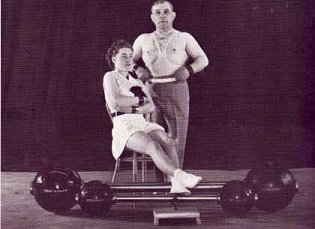
After an initial period of intense questioning by the Irish secret service and military, Goertz was transferred to an internment camp at Athlone, along with several other captured German spies (the most notable of which was probably Ernst Weber-Drohl, simply because he was a former circus strongman and professional wrestler who had performed in Ireland as “Atlas the Strong” before the war). Conditions at the camp were extremely humane – cells were carpeted, and there was a common room and garden for the prisoners. Eventually Goertz resigned himself to his fate, and passed the next few years by writing two plays, and by translating the works of WB Yeats into German. In one letter written from the camp he told a friend:
I often curse fate that I found friends here, friends who showed me the genius of the country. I fell in love with Ireland: the more upright a lover is, the more he suffers if his love is unrequited.
At the end of the war most of the prisoners at Athlone were repatriated to Germany. Goertz had no wish to leave Ireland, and seemed to have a particular dread of falling into Russian hands if he returned to Germany. (Perhaps a guilty conscience over his “interrogation” activities in the First World War.) He cut a deal with Éamon de Buitléir, second in command at G2, that he would not be immediately deported if he gave them information about his activities in Ireland, though it seems he did protect the old women who had protected him. An official amnesty for all German spies in Ireland from the Irish Justice Minister in 1946 let him relax, and he became the secretary of the Save The German Children Society, a charity which eventually took in 500 German war orphans. The orphans were housed in the old military barracks at Glencree in County Wicklow, which had previously been used to hold German airmen who had crash-landed in Ireland during the war.
However this apparent calm soon came to an end, as increasing pressure was placed on Ireland to repeal the amnesty. On the 12th April 1947 Goertz and six other German refugees were arrested. Most were deported immediately, but Goertz was granted a brief respite to allow him to put his Irish affairs in order. During this period he was offered a deal by Ambassador Hempel that purported to come from the Americans, which offered him asylum if he agreed to work for them. He was still considering this deal when he arrived at Dublin Castle on the 23rd of May for what he thought was an appointment to extend his parole. Instead he was told that he was to be deported to Germany that afternoon. Goertz reportedly “stared disbelievingly at the detective officers”. Then he quickly pulled a glass vial out of his pocket and crushed it between his teeth. The vial contained cyanide, and he died instantly.
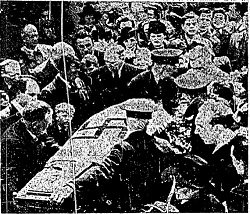
Goertz’s funeral attracted a great deal of attention in the newspapers. His pallbearers included Dan Breen (a notoriously pro-Axis TD) and Charles “Nomad” McGuiness (an Irish adventurer and explorer who had been a member of the IRA in the 1930s, and who had fought *against* the Fascists in the Spanish Civil War). The most notable feature in many of the newspaper reports was the large involvement of women in the funeral. Several women in the crowd wore swastika armbands, and one gave a Nazi salute to the coffin. There were also wreaths from the old ladies who had sheltered Goertz when he was in hiding. He was originally buried in a graveyard in Dublin, but in 1974 his remains were exhumed and moved to the German military cemetery in Glencree, next to the old barracks. There his bones still lie, buried in the ground of the country he came to help destroy but in the end would rather die than leave.
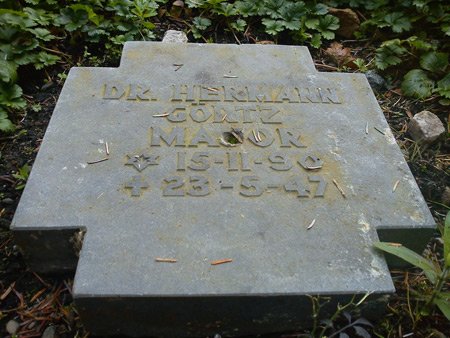
Images via wikimedia except where stated.
[1] His argument was that doing so would only increase the reparations that Germany would be forced to pay after the war.
[2] Well – it’s a bit more complicated than that. Clan na Gael schismed during the civil war, but after the war the pro-Treaty side disbanded (regarding their job as done).
[3] Doubtless she had been painting Communism as the common foe they would face.
[4] The one which was derailed by the RAF’s victory in the Battle of Britain.
[5] The fact that the raid had resulted in an intensive police operation which recovered most of the arms and reduced the IRA’s manpower dramatically should have been a warning sign.
[6] Designed to try to maintain a pretence at respecting Ireland’s neutrality.
[7] Iseult was, according to Maud, conceived in her dead brother’s grave in an attempt to reincarnate his spirit.
[8] Incredibly secret, as the revelation of such a treaty’s existence would have led to the fall of the Irish government.
[9] No relation to Stephen.
